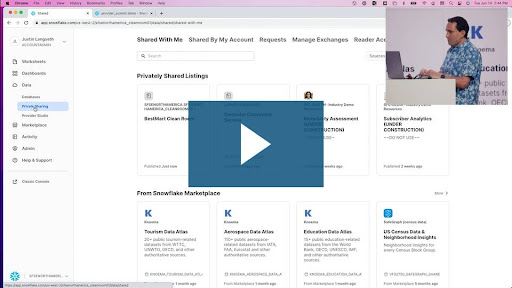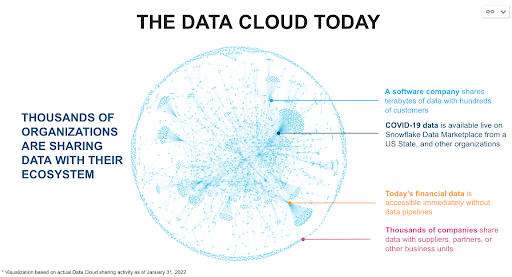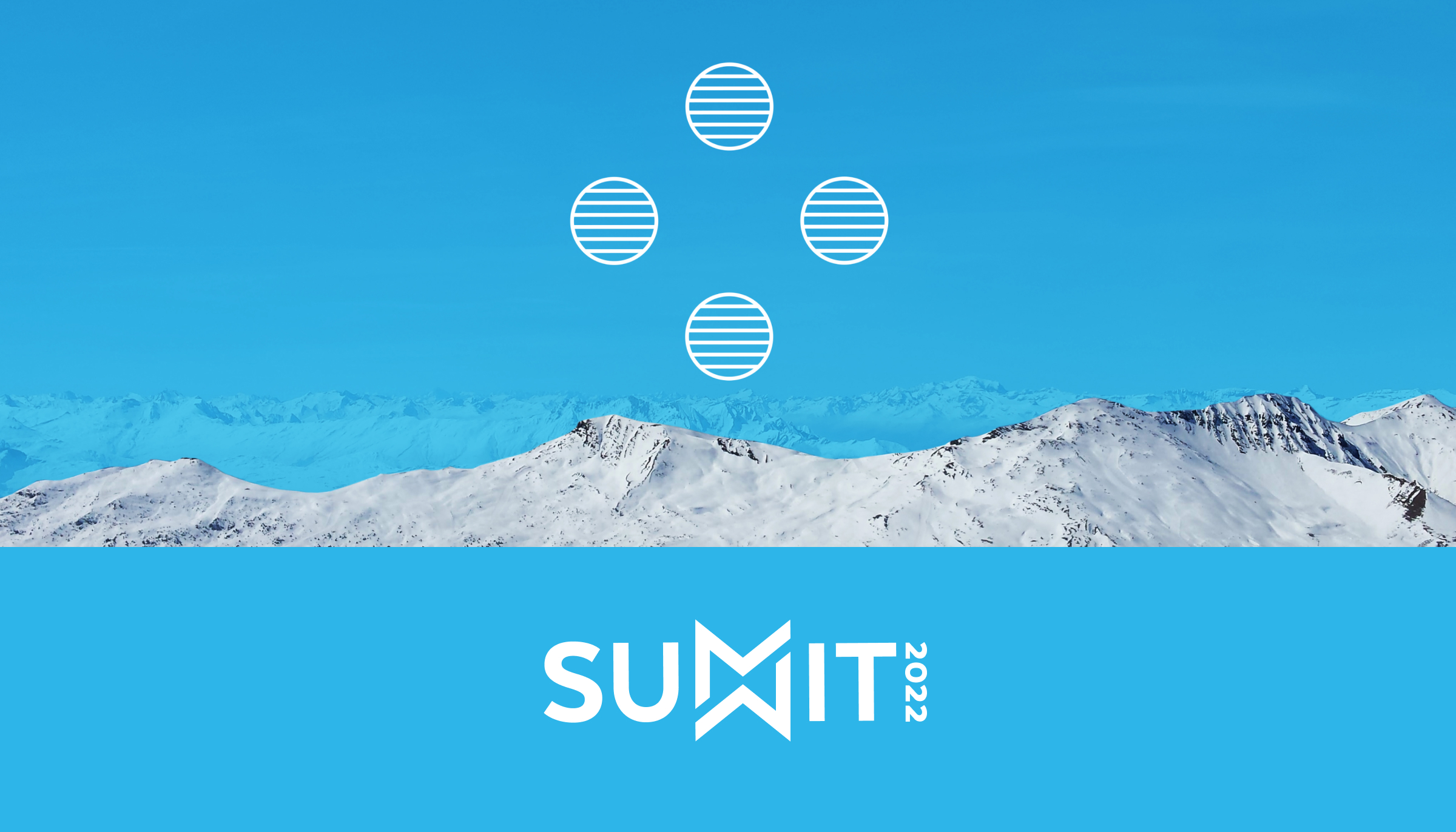Did you hear about the massive snowstorm that hit Las Vegas this summer? That’s right—the Snowflake Summit 2022 came to town in late June, and nearly 9,000 customers and partners joined us to hear about Snowflake’s latest product enhancements and the value delivered to customers and partners. What a week it was!
With the theme The World Of Data Collaboration, it was only fitting to focus one of the keynotes on the value that collaboration brings and how Snowflake enables it. If you missed the presentation live and in person, you can watch the recording below, and I’ll provide an overview here.

Going Further Together with Data Collaboration
Demand for data drives collaboration
For many data leaders, the mandate is clear: use data to deliver business value. And, with new use cases and data-intensive analytic methods, demand for data has exploded. Innovative data leaders have begun to break down silos within their organizations, and some have come to realize that their own internal data is not enough. As one Chief Data Officer (CDO) once told me, “With our own data we can only look internally. We need to see industry benchmarks, regional trends, what waves we can ride on.”
This makes me think of the adage “If you want to go fast, go alone, but if you want to go far, go together.”
«If you want to go fast, go alone, but if you want to go far, go together.«
Foundations of successful collaboration
At Snowflake Summit we shared some exciting new platform innovations that will help customers collaborate and go farther together. But first, we introduced what we see as the foundations of successful collaborations.
The first is trust. I was in the Serengeti last year and was shocked to learn that only 1 in 20 cheetah cubs survive. Why? Well, in part because cheetah mothers live alone. When they hunt, they hide their cubs the best they can. And that’s not always effective. By comparison, the survival rate for lion cubs is 4 times higher. Lions live in prides, and lionesses trust other mothers to watch their cubs while they hunt. Trust and collaboration in raising their families increases the likelihood of survival.

The second foundational element is diversity. Successful collaboration occurs when two or more people approach a problem from a different perspective. For example, as a molecular biologist, Emmanuelle Charpentier studied a particular bacteria that defended itself from viruses by sending “messenger RNA” to cut up the virus’ DNA. She partnered with biochemist Jennifer Doudna, an expert in RNA, to recreate these “genetic scissors” and make them programmable. Their collaboration resulted in a Nobel Prize and contributed to the development of COVID vaccines.
The third element is efficiency. Survival of the fittest has often boiled down to efficiency through collaboration. Have you ever had little seedpods stick to your pants during a hike? We always called those hitchhikers. Many plants rely on animals, birds, and insects to spread their seeds far and wide. It turns out that over 90% of tree species in rainforests disperse seeds this way. What’s more efficient than hitching along for a collaborative ride?
How do these examples relate to business collaboration? Have you ever tried to collaborate with someone you didn’t trust? Hopefully not. But if you did, you likely didn’t feel comfortable sharing your more sensitive data. Now think about your most successful business collaborations. Were they with companies that did exactly what you do? Or did you seek out experts in complementary fields? And, would you continue to collaborate if it was just too much effort, and not an efficient way of advancing mutual goals? Likely not.
Successful companies (and their leaders) collaborate
Collaboration does make a difference. Snowflake recently commissioned a survey of over 1,000 senior business and technology executives across 8 countries and 5 industries, and published a compelling report:
How to Win in Today’s Data Economy. We found that when companies collaborate with data across business units and with external partners, they report better business performance. These are the Data Economy Leaders.

More than three-quarters of these companies report positive annual revenue growth over the past three years, compared to just over a third of the Data Economy Laggards. And, Leader companies are substantially more likely to report increases in profit margin and operational agility—both critical in a dynamic business environment. They demonstrate that data collaboration truly does fulfill that mandate to deliver business value.
The evolutions from data sharing to data collaboration
The founders of Snowflake saw an opportunity early on to help customers apply these core principles—trust, diversity, and efficiency—to successfully collaborate with one another. Back then, most data sharing technology required businesses to copy and move data from one system to another. These methods required a great deal of effort and made it impossible to govern shared data, let alone trust that others would keep it secure.

With the introduction of Snowflake Data Sharing, that all changed. Instead of copying and moving data, Snowflake customers could provide direct and revocable access to live data and observe how the shared data was being used and by whom—enabling them to “trust but verify.”
In 2019, Snowflake announced the Data Marketplace (today called Snowflake Marketplace) providing customers with access to diverse, external data sets that could enrich analysis with new perspectives. The Marketplace also gave customers the opportunity to monetize their own data assets as a data provider.
Snowflake’s investments in data sharing continued, enabling customers to easily share globally, across cloud providers and regions. By removing barriers, data collaboration became much more efficient.
Now, Snowflake is taking trust, diversity, and efficiency to the next level.
Snowflake customers can now collaborate on more than data by creating and sharing data services and native applications, for new capabilities like data enrichment and identity resolution.
Snowflake has also invested in privacy-preserving collaboration capabilities. With the new privacy features currently available in private preview, customers can more easily create Global Data Clean Rooms to collaborate on sensitive data without exposing it to another party. I call it “sharing without showing.”
And until now, training machine learning (ML) models meant moving data to external environments. Well, we are excited to introduce support for multi-party ML that keeps data processing securely in Snowflake. The “Building in the Data Cloud” keynote delivered at Snowflake Summit 2022 provided more detail on these announcements (watch below).

Building in the Data Cloud – Machine Learning and Application Development
Snowflake customers do collaborate in the Data Cloud
The value of the Snowflake Data Cloud lies not only in the platform but also in the content made available: the data, data services, and now the applications that are being created by companies collaborating with one another.
Over this past year, we’ve seen 122% year-over-year growth in the number of what we call “stable edges,” or durable use of shared data between companies.

And what’s even more exciting is the variety of ways in which they are collaborating:
- Retailers such as 84.51˚ are securely sharing data with their CPG partners to optimize supply chains.
- Financial services companies such as Pacific Life Insurance are personalizing offers using data from Experian, which it accesses directly from Snowflake Marketplace.
- Even SaaS companies like Stripe are sharing payments data with their customers such as Hubspot and Zoom to identify new revenue opportunities.
The snow will go on
If you didn’t get a chance to visit Snowflake Summit in Las Vegas, don’t worry. The show (and the snow) will go on the road in the fall. The Data Cloud World Tour kicks off in late August and will travel to 21 cities across Europe, Asia, and North America. Stay tuned!



